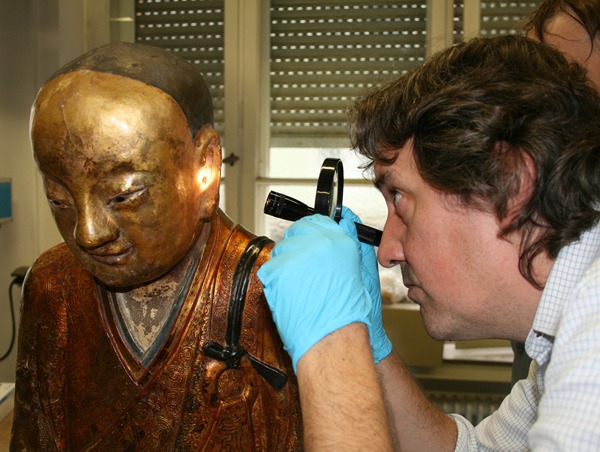 |
|
A researcher studied a hole in the ear of a Buddha statue dated to the 11th or 12th century at the Drents Museum in the Netherlands. [Photos provided by the Drents Museum]
|
The mummy's well-being may be the only issue on which van Overeem, as well as the villagers of Yangchun, agree.
Villagers in Yangchun village wrote letters in April to the Dutch museum and collector demanding the return of the Buddha statue, while the State Administration of Cultural Heritage in China paid closed attention on the affair.
On May 6, the head of the Cultural Relics Identification Center in Fujian Administration of Cultural Heritage said that the State Administration of Cultural Heritage had full authority over the mummified Buddha situation, but the provincial administration wanted to do more research on Yangchun village to get more information about the statue.
According to him, the provincial administration has been collecting evidence ever since March. By comparing photos and specifics on the size, height and weight of the Buddha that is currently owned by the Dutch collector and the one that went missing 19 years ago, it was initially confirmed that the two statues were identical.
In ancient China, monks who made great achievements usually practiced self-mummification when they felt they are about to die. They stopped eating and drinking to deplete their organs in the period until death.
After a monk died, he was buried sitting in the lotus position in a clay vessel. The preserved body was decorated with paint and adorned with gold.

